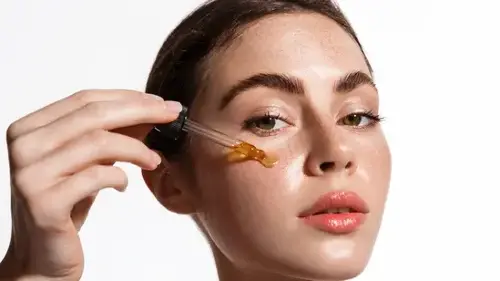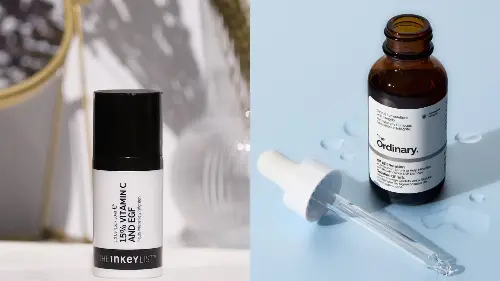
The beauty industry is always on the lookout for the next big thing, and right now, growth-factor serums are the one everyone is talking. These were once limited to medicine for wound healing, and now have entered into the world of luxury skincare, promising an increase in collagen, better skin texture, and fewer wrinkles too. Influencers are raving about it with skincare brands jumping on the trend, offering plant-derived, animal-derived, and lab-engineered formulations. But do you really need growth factor serums in your daily routine? Here’s what dermatologists have to say.
What are growth factors, and how do they work?
Growth factors are naturally occurring proteins that act as signaling molecules in the skin. They help stimulate collagen production, elastin formation, and overall cell repair. Growth factor serums, on the other hand, are skincare products that contain these proteins.
Dr Kashish Kalra, Head of Dermatology at Max Smart Super Speciality Hospital, explains, “Growth factors started in the medical field for wound healing but have now expanded into skincare. They can be derived from plants, animals, or even created in labs. They are particularly beneficial for those over 40, as they help boost collagen and elastin, leading to fewer wrinkles and better skin texture.”
When it comes to different sources, Dr Kalra adds, “Plant-derived growth factors are generally lighter and suitable for sensitive skin, but they may not be as biologically compatible as human-derived ones. Human-derived growth factors, which come from cultured skin cells or bioengineered proteins, can offer more direct cellular communication but also carry a higher risk of allergic reactions.”
However, Dr Kalra also tells us that “growth factors are large molecules, and there’s debate over whether they can effectively penetrate the skin barrier. They are often used in clinical treatments like microneedling and PRP (platelet-rich plasma) rather than as standalone serums for everyday skincare.”
How do growth factors compare to retinol and other anti-aging ingredients?
Growth factors do support skin repair, but they don’t replace retinol, peptides, or other well-known anti-aging ingredients. Retinol speeds up cell renewal and exfoliates the skin, while peptides help build collagen. Growth factors work differently — they help skin cells communicate better, encouraging regeneration and healing.
Dr Mandeep Singh, Head of Dermatology and Cosmetic Surgery at Paras Health, Gurugram explains that while growth factors help with skin repair, they are not a substitute for retinol, peptides, or other proven anti-aging ingredients. “Growth factors aid in improved skin texture and smoothing of fine lines, yet studies on their wrinkle-reducing effects are still limited. They work best with other treatments like microneedling or laser therapy," he says.
Dr Singh adds, “Unlike retinol, which has evidently been backed by research into its anti-aging properties, long-term clinical studies are just not that many for growth factors. They should be viewed as another tool rather than replacements for existing anti-aging ingredients.”
So do you need really need a growth factor serum?
Growth factor serums come with a hefty price tag, making them a luxury addition rather than an essential part of a skincare routine. Dr Kalra says, “While they can provide noticeable benefits for mature skin, those recovering from cosmetic procedures, or individuals with scarring, they are not a necessity for everyone.”
Dr Bhardwaj emphasizes, “For the average skincare user, a solid routine with sunscreen, antioxidants, retinol, and hydration can deliver impressive results without the added expense of a growth factor serum.”
If you’re looking for alternatives, Dr Singh suggests, “Peptides, niacinamide, and ceramides offer similar benefits at a fraction of the cost. Growth factors are useful but should be viewed as an add-on rather than a must-have.”

Brands offering more affordable yet effective options, like The Ordinary and The Inkey List, make growth factor serums more accessible without breaking the bank.
So, while growth factor serums are getting popular, whether they’re worth the investment depends on your specific skin needs — and your budget.